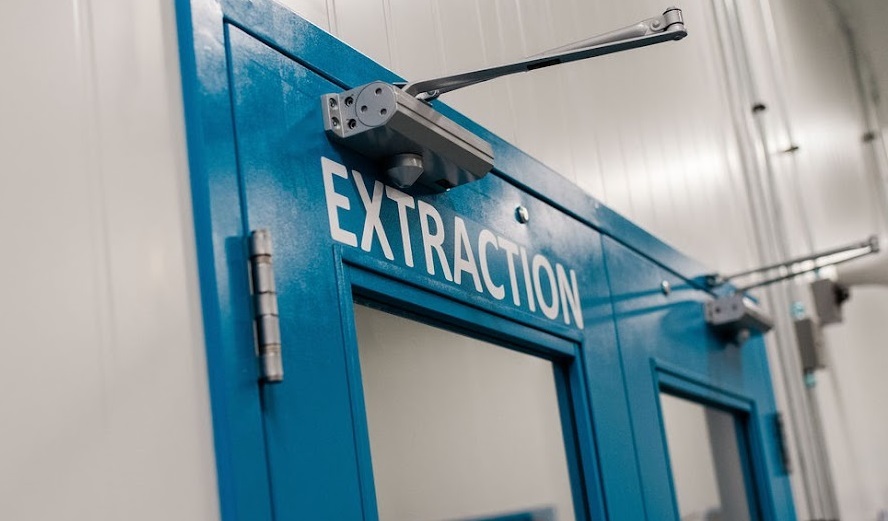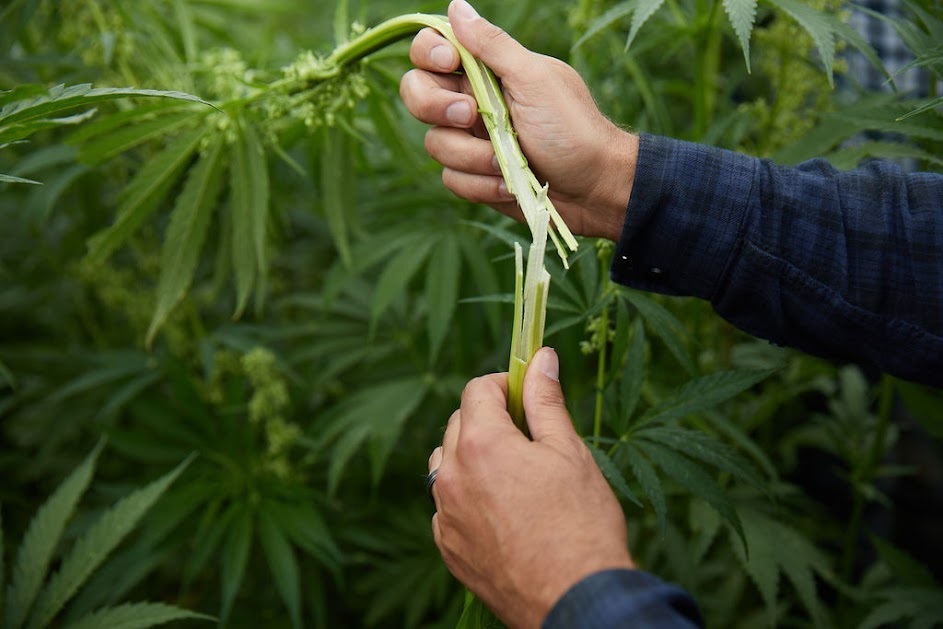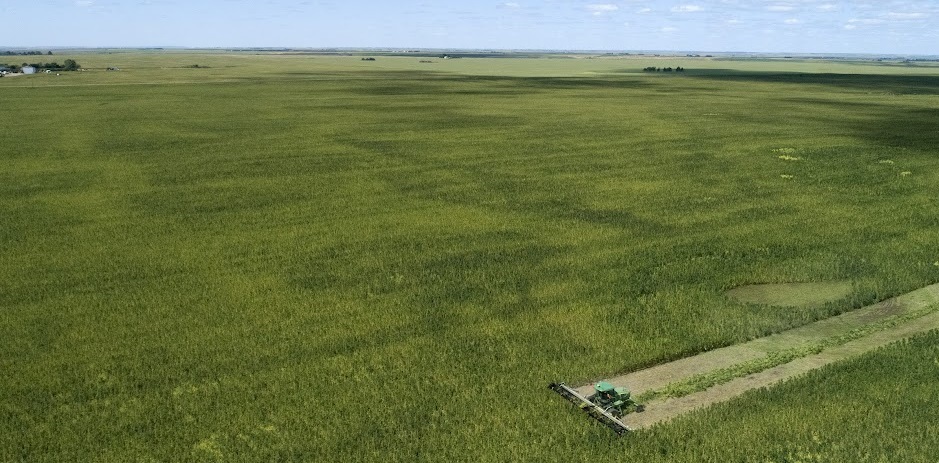For all the turmoil that the hemp sector has gone through in recent years, there are still efforts that are quietly taking place to advance the industry. For example, there are researchers working to develop hemp cultivars for so-called “whole plant utilization;” that is, hemp varieties that can ultimately produce good quality cannabinoid biomass, grain, and fiber all at the same time.
Along with simplifying hemp cultivation, researchers suggest the drive towards a multi-use plant could end up being a win-win for the industry. In their 2019 paper, Lokendra Pal and Lucian Lucia – two professors at North Carolina State University’s Department of Forest Biomaterials – discussed how the reintroduction of industrial hemp production in the United States could provide “significant economic and environmental benefits” as the plant’s uses are explored further. They also noted, “Utilization of the whole hemp plant may be the key to attaining economic, environmental, and social sustainability.”
“Some Extremely Compelling Things Coming Down the Pipeline”
Andrew Potter is President and CEO of Blue Sky Hemp Ventures, a private Canadian company based in Alberta that produces hemp “superfoods,” along with cannabinoid and industrial hemp products. The biggest issue when it comes to the creation of a multi-use hemp variety, he told Hemp Benchmarks, is considering both genetics and post-harvest processing factors in order to effectively monetize the whole plant.
“The reality is, if you’re producing high-quality grains [the plant] won’t produce that high-quality fiber,” he said. “By focusing on the whole plant we can make more sense of it. It gives us a lot more control over the market and the ability to move quicker.”
Potter said that about two years ago he and his colleagues realized they needed to become more involved in hemp genetics. “Most of the industry is focused on feminized seed varietals,” he said. “We started working with two companies on the next generation of genetics, and focused on whole plant utilization.” As a result, “there are some extremely compelling things coming down the pipeline. I think in the next couple of years you will have varietals with CBD potency and good stalk genetics – game-changers.”
How Much CBD Can Multi-Use Hemp Crops Produce?
One consideration for a future multi-use hemp plant, Potter noted, is ensuring the new varietal creates biomass with good CBD potency, which would seemingly be a significant challenge in a crop that is also pollinated for grain production. In response, the company came up with what they call “biomass high grading,” where hemp biomass is “graded” for more efficient extraction.
Potter explained: “The biomass is physically fractionated to concentrate the trichomes and CBD bearing parts of the plant. The process begins in the field where we capture chaff using specially designed chaff carts. The chaff then goes to our proprietary ‘reduced flower and leaf’ (RFL) facility for high grading. This is a proprietary system that Blue Sky developed. Depending on what we want to optimize, this process can increase the potency by [roughly three times] from what is collected in the field, which makes for more efficient extraction.”
“That’s the secret sauce,” he added. “While harvesting grain we can capture the chaff behind the combine. This is not high quality, smokable flower that we’re going for, but what we’re getting is chaff with reasonable potency. Then we can put it into a facility, and it will strip out any [remaining] grain, helping grain yield. There will always be some hurd and fiber bits in there, get that into the industrial stream. After that we can separate that remaining chaff and start to isolate the chaff, and boost the potency for extraction.”
The Canadian limit for THC content in hemp is 0.3%, just like in the U.S. Potter said tri-use plants can maintain compliance with the required THC limit, while also having good CBD potency. “From our analysis, anything that is 5% to 10% in that yield is great,” he said. “In the next couple of years we’ll be deeper into that range. There are still benefits of those higher [CBD] potencies, but it has radically diminishing returns, and potencies over 10% can end up changing the grain characteristics.”
Preparing for Future Markets
There are, of course, other issues that come into consideration in breeding hemp cultivars; factors such as developing the optimal varieties for various geographic regions, climates, and soil conditions. More importantly, according to Potter, is the creation of consumer-ready products from all parts of the hemp plant. “In time there will be standards for value chains and there will be liquid markets for each of those chains,” he said. “There is no market yet. It will be three to five years before we have a liquid market in any of these, with well-defined standards.”
Until such markets are established, he added, “you can move a lot quicker to doing the whole plant in-house. Most people getting into decortication fiber want to produce perfect fiber, but that doesn’t yet co-exist with food plant production and there’s no liquid market yet for the fiber.”
Potter said the current hemp sector contraction has also led to a decline in the investment necessary for developing hemp into a multi-use plant. “We hear very little interest in building new food facilities, really anywhere,” he said. “[Hemp-derived] food is still largely ignored. Fiber, we hear about all the time, everyone wants to build decortication capacity. But that could mirror what we saw in the cannabinoid side; where you have a whole bunch of people raise money for decorticators without really knowing what they’re doing, and then realizing that you can’t make a go of it without that grain offtake. We’re hearing that the hurd demand is reasonably strong, but the fiber demand is just not there for what’s coming onstream.”
Getting Corporations and Politicians to Commit to Hemp
Potter is frustrated by how officials in both Canada and the U.S. – a major market for Canadian hemp grain – have avoided working with the hemp sector due to the continued stigma around cannabis in general. “A handful of politicians are interested,” he said, “but for most hemp falls into a spot where everybody is scared of it, or it’s not innovative enough.”
According to Potter, development of the hemp fiber market will require automakers, plastics manufacturers, and others to commit to hemp as a commodity and convince politicians, corporate leaders, and consumers of the industry’s potential, especially as a sustainable commodity.
“I think the challenge is it’s a long cycle from talking about it to doing it,” he said. “And the challenge on the industrial side is … that we haven’t solved the chicken-and-egg issue for automakers. It’s been a stalemate, where they needed people to build the capacity to demonstrate the fiber supply chain is actually available before they could contract. We’re starting to solve that, but you’re still several years of trialing the fiber before it translates to a massive purchase order for a decortication facility. I absolutely believe it will come, but it could still be another three to five years before it shows up in a big way.”
Ultimately, Potter expects the hemp fiber and grain markets to grow at a very different rate compared to hemp-derived cannabinoids. “The food and fiber side could support over a million acres [of hemp cultivation],” he noted. While such an outlook may seem to undercut the value of “whole plant utilization” efforts, Potter pointed out that having the option of taking advantage of multiple production targets also offers flexibility. “We will still have a tri-use crop, but at harvest time we will most likely make the decision to cultivate our acreage for dual-use, fiber and grain, hemp.”
Related Articles:
- Focus on Fiber: Dispatches from the 2022 Industrial Hemp Growing Season (November 2, 2022)
- Hemp Fiber Trials Expected to Yield Important New Insights for Young Industry (October 12, 2022)
- U.S. Hemp Grain Market Faces Headwinds from Bear Market, Ukraine War (July 6, 2022)
- How the Automotive Industry is Incorporating Hemp Fiber Products to Meet Sustainability Goals (June 8, 2022)





